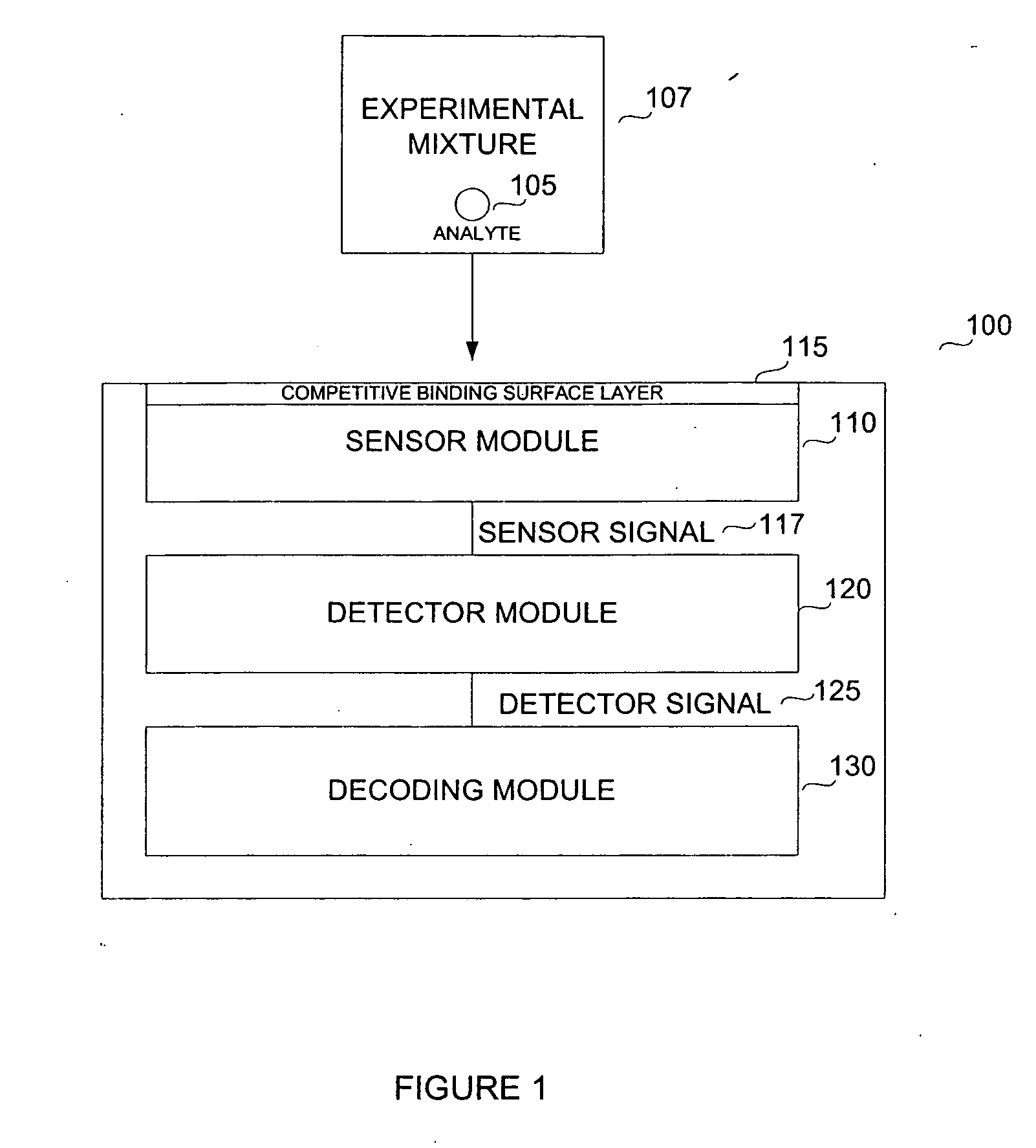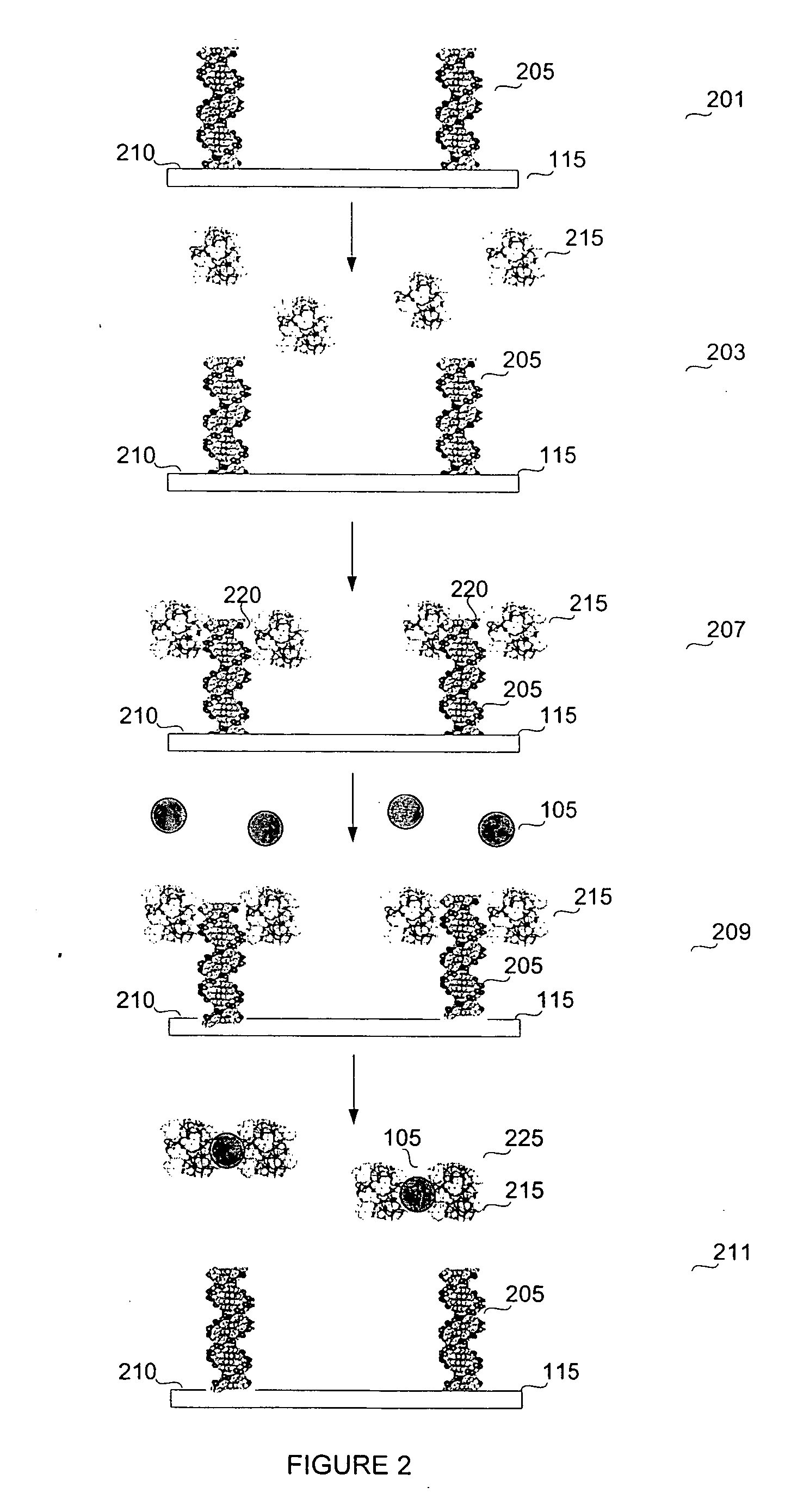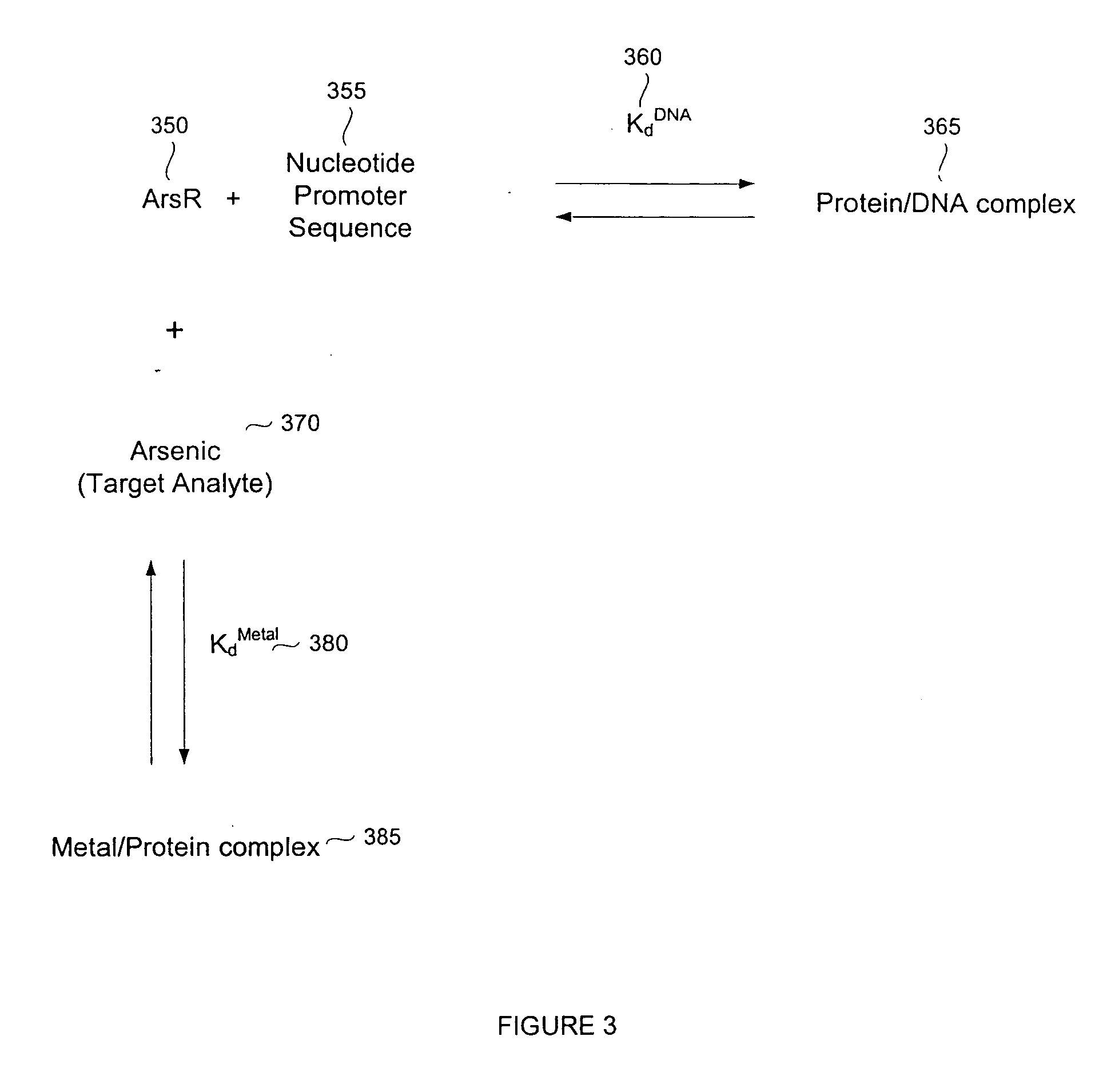Biosensor for small molecule analytes
a biosensor and small molecule technology, applied in the field of biosensors, can solve the problems of lack of sensitivity necessary to detect inorganic matter in quantitative trace analysis procedures, lack of portability of devices, etc., and achieve the effect of increasing sensitivity and specificity
- Summary
- Abstract
- Description
- Claims
- Application Information
AI Technical Summary
Benefits of technology
Problems solved by technology
Method used
Image
Examples
example 1
Expression and Purification of E. coli ArsR
[0135] A synthetic gene for high level expression of ArsR from E. coli was prepared using codon optimization (Wada et al., Nucleic Acids Res. 1992, 20 (Suppl.):2111-2118; Zhang et al., Gene 1991, 105:61-72). Codon optimization, using triplet sequences that encode mRNA triplets that match with higher concentrations of tRNA and thus increase the efficiency of translation, was used to increase yield. The sequence of the gene, and protein it encodes, are shown in SEQ ID NOS: 1 and 2, respectively. Restriction site additions are present in the first three and last six bases of the sequence in SEQ ID NO: 1.
[0136] For initial cell growth, a fresh transformation was first performed on Kan Plates overnight. Next, a culture from the colony pick was grown overnight in 50 ml of LB, 25 μg / ml Kanamycin for selection, at 37° C. The plasmid used was pET30A+ containing the optimized sequence for the ArsR protein (GenBank Accession# x16045 Version-x16045.1...
example 2
Immobilization of the DNA and Binding of ArsR to the DNA
[0144] Table 1 displays the sequences for the DNA used in the ArsR protein binding. The operon can be found on a plasmid or in the genome. Therefore, PLAS indicates the sequence from existing plasmid and CHROM indicates the chromosomal sequences on certain bacteria. The letter following this designation is either a L for long or an S for short. The following “1B” or “1T” designates top or bottom. Therefore, PLASL1T describes the top, long oligo sequence from plasmid.
TABLE 2DNA Sequences for ArsR Protein BindingSEQDNASequenceID NO:PLASL1T5′ Biotin -TTA ATC ATA TGC GTT TTT3GGT TAT GTG TTG-PLASL1B5′ CAA CAC ATA ACC AAA AAC GCA4TAT GAT TCHROML1T5′ Biotin- CTG CAC TTA CAC ATT CGT5TAA GTC ATA TAT GTT TTT GAC TTA-CHROML1B5′ TAA GTC AAA AAC ATA TAT GAC6TTA ACG AAT GTG TAA GTG CPLASS1T5′ Biotin- TTA ATC ATA TGC GTT TTT7GGT TA-PLASS1B5′ TA ACC AAA AAC GCA TAT GAT T8CHROMS1T5′ Biotin- TTA AGT CAT ATA TGT TTT9TGA CTT A-CHROMS1B5′ T AAG ...
example 3
Prototype
[0149]FIG. 12 illustrates the top perspective view of the apparatus 1000 for maintaining the Spreeta™ 2000 (S2K) device 1001. FIG. 13 illustrates the top view of the apparatus 1000. FIG. 14 illustrates the cross-sectional side view of FIG. 13 cut along line 14-14. One feature of the apparatus 1000 is the clamp 1002 and clamp block 1003 which firmly grasp the S2K device 1001 and holds it in appropriate relation to its mating connector 1004. When and if agitation is provided, the clamp prevents relative motion between the S2K device 1001 and the connector 1004. Instead, motion is absorbed in the interconnecting cable 1005. The clamp 1002 has some float in relation to the case. Tightening of the clamp 1002 to secure the S2K device 1001 can be by knurled thumb screws 1006, a 1.4 turn actuator, or a slide.
[0150] A flow cell 1007 allowing for injection of a quantity of fluid is affixed to the front surface of the S2K device 1001. As designed in this device, the flow cell 1007 a...
PUM
| Property | Measurement | Unit |
|---|---|---|
| Flow rate | aaaaa | aaaaa |
| Concentration | aaaaa | aaaaa |
| Area | aaaaa | aaaaa |
Abstract
Description
Claims
Application Information
 Login to View More
Login to View More - R&D
- Intellectual Property
- Life Sciences
- Materials
- Tech Scout
- Unparalleled Data Quality
- Higher Quality Content
- 60% Fewer Hallucinations
Browse by: Latest US Patents, China's latest patents, Technical Efficacy Thesaurus, Application Domain, Technology Topic, Popular Technical Reports.
© 2025 PatSnap. All rights reserved.Legal|Privacy policy|Modern Slavery Act Transparency Statement|Sitemap|About US| Contact US: help@patsnap.com



